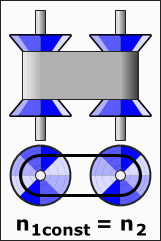


Transmission Systems Service
Transmission technicians are automotive professionals who specialize in diagnosing, repairing, and rebuilding vehicle transmission systems and drivetrains.
Statistics
Summary
Tech Rivalries
Community DynamicsBench Rituals
Social NormsDiagnostic Prestige
Insider PerspectiveTech Evolution
Opinion ShiftsTransmission Rebuilders
Technicians focused on the complete teardown and rebuilding of transmission units.
Diagnostic Specialists
Professionals specializing in advanced diagnostics and troubleshooting of transmission and drivetrain issues.
Shop Owners/Managers
Individuals managing or owning automotive service businesses with a focus on transmission work.
Apprentices & Trainees
Newcomers and students learning the trade through formal education or on-the-job training.
Statistics and Demographics
Transmission technicians require hands-on training and skill development, making workshops and classes a primary venue for community engagement and learning.
Industry associations for automotive professionals provide networking, certification, and ongoing education specific to transmission systems.
Much of the community interaction and knowledge sharing occurs in auto repair shops and service centers where technicians work together.
Insider Knowledge
'Just slap a new valve body on it, and she'll be fine!
Why did the clutch pack break up the transmission? Because it wanted more friction in its life!
„Slushbox“
„Bench tear-down“
„Hard parts“
„Soft parts“
„Valve body“
Always perform a bench tear-down before committing to rebuild work.
Never neglect fluid brand and spec recommendations during service.
Share war stories and unusual failures with peers.
Use the correct tools for clutch pack calibration and never shortcut measurements.
Carlos, 34
Transmission TechnicianmaleCarlos has worked in automotive repair shops in Mexico City for over a decade, specializing in transmission diagnostics and rebuilds.
Motivations
- Solving complex mechanical problems
- Keeping vehicles running smoothly
- Gaining recognition for technical expertise
Challenges
- Access to up-to-date diagnostic tools
- Managing time pressures during repairs
- Dealing with variability in vehicle models and transmission types
Platforms
Insights & Background
First Steps & Resources
Learn Transmission Basics
Observe a Transmission Service
Practice Basic Maintenance Tasks
Learn Transmission Basics
Observe a Transmission Service
Practice Basic Maintenance Tasks
Join Automotive Tech Communities
Disassemble a Scrap Transmission
„Showing a newcomer their first bench tear-down.“
„Mentoring through sharing diagnostic puzzles.“
Assuming all transmissions use the same fluid type.
Skipping detailed diagnostics and ordering hard parts immediately.
Facts
In North America, transmission shops often specialize heavily in automatic transmissions due to prevalence in vehicles, with a strong focus on torque converter work.
European transmission techs frequently deal with a higher proportion of manual gearboxes and dual-clutch systems common in European cars, requiring distinct skill sets.





















